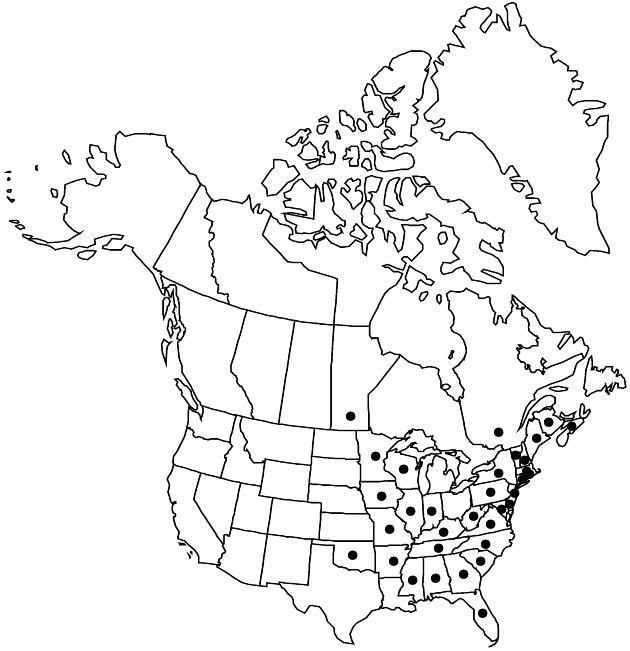Antennaria plantaginifolia
Fl. Bor.-Amer. 1: 330. 1834.
Dioecious. Plants 6.5–20(–25) cm. Stolons 2.5–7.5 cm (mostly ascending when young). Basal leaves (petiolate) 3–5(–7)-nerved, obovate to suborbiculate, 35–75 × 15–35 mm, tips minutely mucronate, abaxially tomentose, adaxially green-glabrescent to gray-pubescent. Cauline leaves linear, 6.5–35 mm, distal flagged. Heads 4–17(–30) in tight corymbiform arrays. Involucres: staminate 5–7(–8) mm; pistillate 5–7 mm. Phyllaries distally white. Corollas: staminate 2–3.5 mm; pistillate 3–4 mm. Cypselae 0.5–1.6 mm, slightly papillate; pappi: staminate 2.5–4 mm; pistillate 3.5–5.5 mm. 2n = 28.
Phenology: Flowering mid–late spring.
Habitat: Dry, open, deciduous woodlands, tops of banks, ridges, and bluffs, sandstone formations, slopes in openings in woodlands
Elevation: 0–1500 m
Distribution

Man., N.B., N.S., Que., Ala., Ark., Conn., Del., Fla., Ga., Ill., Ind., Iowa, Ky., Maine, Md., Mass., Minn., Miss., Mo., N.H., N.J., N.Y., N.C., Okla., Pa., R.I., S.C., Tenn., Vt., Va., W.Va., Wis.
Discussion
Antennaria plantaginifolia is a diploid progenitor of the A. parlinii complex and is similar to that species except for smaller heads and adaxially gray-pubescent basal leaves (R. J. Bayer and G. L. Stebbins 1982; Bayer 1985b; Bayer and D. J. Crawford 1986). It is a diploid ancestor of the A. howellii complex. It is found in the Appalachian region; disjunct populations occur in the driftless area of Wisconsin and Minnesota (Bayer and Stebbins).
Selected References
None.
